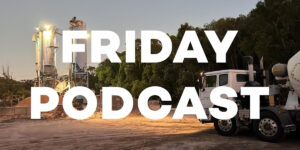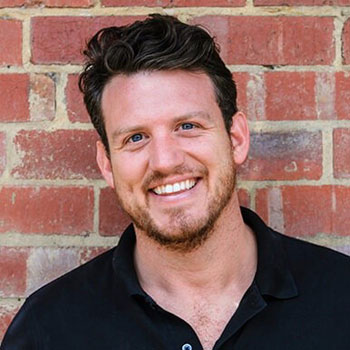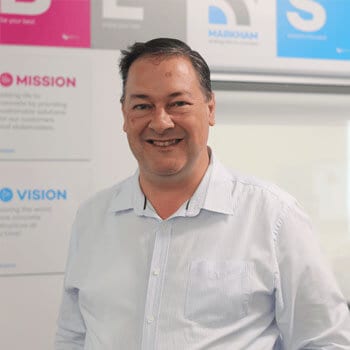We interview Andrew Ritchie, co-founder of tender management platform EstimateOne – a core tool for MARKHAM’s estimating team for many years. Andrew shares some fascinating insights on EstimateOne’s history, and current vision for the construction industry. He also talks about learning from the industry in New Zealand and the United Kingdom, along with a spoiler of EstimateOne’s plans for the future. We wrap up with his thoughts on the long-term impacts of the past 18 months.
Andrew Ritchie of EstimateOne

Invisible Strength
Andrew Ritchie of EstimateOne
/
RSS Feed
Andrew Ritchie of EstimateOne
EstimateOne – estimateone.com PH 1300 705 035
Andrew Ritchie LinkedIn profile – linkedin.com/in/andrew-ritchie-ab84392
Andrew’s interview in AFR – afr.com/work-and-careers/leaders/the-tough-questions-this-locked-down-boss-can-t-answer-20200818-p55mwp
View the Transcript
BRENDAN: Well g’day and welcome, everybody! Great to have you listening today to MARKHAM’s Invisible Strength podcast. I’m Brendan Stead, Marketing Coordinator in MARKHAM’s Bundaberg office. Today we’re privileged to have a special guest on board, joining me virtually from Melbourne: Andrew Ritchie, co-founder of construction tender management platform EstimateOne.
Hello there Andrew! Let the audience hear you and tell us a bit about yourself.
ANDREW: G’day, Brendan, but first thanks for having me on the podcast! Great to be here. A bit about myself – I’m the co-founder of EstimateOne, alongside Michael Ashcroft. We started EstimateOne…It feels like a lifetime ago now, but it’s 13 years ago, just post the Global Financial Crisis. And for your listeners that don’t know us, EstimateOne is a digital platform specifically designed for the commercial construction industry, and connects head contractors, subcontractors and suppliers, predominantly at the time of tender.
BRENDAN: That’s excellent, yes. Personally, I’ve been fascinated to watch EstimateOne’s development over, I guess, the last 10 years, starting when I was with a previous company. And certainly, when I was in the estimating department for MARKHAM, I used it hands-on very heavily. I know the sales team depend on it, more and more.
But can you give us some thoughts on EstimateOne’s view or vision for the construction industry?
ANDREW: Yes, sure, so I guess our story is one of increasing ambitions. You know, when Mike and I started the business we really just wanted to have sort of a little side income, a side hustle, so that we could go and do what we really wanted to do, which for me was to become a teacher, and for Mike was to go back into construction. His background is in construction management, working at Kane Constructions as an estimator.
So it was really his kind of problems, on a day to day basis, of posting documentation to subcontractors; standing by the fax machine, waiting for quotations to be faxed through; that we sort of set out to solve.
I think over the years, we’ve found that construction procurement, the problems in construction procurement are a lot more significant than we originally thought. And they’re not just felt by estimators and head contractors, they’re felt all the way through the supply chain. And a few years ago we went through a process of going, well, you know, we’ve got this business that seems to be working well, and our customers really enjoy using the platform; you know, all pretty rosy – but where are we going, you know? Like, what’s the point of all this, above and beyond just trying to make revenue? And I think that that’s a really important question for any company or any organisation to ask themselves, and to answer. Not just, you know, how are we going to make money, but what is the nature of the impact that we are trying to create?
And yes, looking at MARKHAM’s website this morning it’s clear, right, the impact that you want to have is just better concrete buildings, right? Like more robust, more resilient concrete buildings. And we would sort of position ourselves quite similarly, in that our vision is a robust, resilient construction industry. One that is fair to all parties; so head contractors; suppliers; subcontractors; consultants; clients; asset users. We think that there’s probably a little bit of unfairness right now in the industry and how it operates. So we want it to be fair, we want it to be profitable for all those parties; rather than just the profits centred on one particular party in the supply chain.
And ultimately we want it to be full of trust. And we think that there’s a little bit of ways to go on that one; but we think really, that the decisions and the workflows related to construction procurement. And when we say procurement, we basically just mean, What am I buying? For what price? And of whom? You know, whether it’s labour or materials, that’s sort of how we define construction procurement.
We think solving the challenges within construction procurement will ultimately lead to that vision, manifesting that higher quality, more productive, fairer, and more profitable for all parties. That’s the vision that we have for the construction industry.
BRENDAN: That’s excellent, that’s excellent. I like the approaches to fairness and spreading it over the entire chain. And we see that as dealing with every level, I suppose in the procurement chain, yes.
ANDREW: Yes well, I think especially as a supplier of a particular material – you’ve actually got stakeholders left, right and centre, right? You’ve got the client, the consultants, the builders, potentially subcontractors that are doing the pours, and things like that. So I can imagine for an organisation like yours, you know, trying to navigate that supply chain is half the battle.
BRENDAN: Yes, absolutely.
I know our New Zealand colleagues – because as you’re probably aware, MARKHAM’s headquarters are actually in New Zealand – they would love to see the EstimateOne platform used more heavily by construction firms over there. Are you seeing growth in that space? Or is there some way we can … give them a shout out?
ANDREW: Yes! Give them a hand? Look, to be completely honest with you, we haven’t paid the level of attention to New Zealand that it’s really deserved. I think there’s a… It’s very easy for an Australian company to make the error of treating New Zealand like another state of Australia and sort of, just kind of, not having a concerted effort. But we really see the construction industry in New Zealand as being similar to, but not identical to, the Australian market, and so there is a bit of product tailoring that we want to do. And in some ways we see the New Zealand market the way it operates, it’s actually closer to that vision than the Australian market. You know, that there is a bit more focus on the quality, and building enduring relationships between builders and suppliers, architects and subcontractors. And so actually I think, rather than using sort of New Zealand, as this sort of extra state where we’re just trying to deploy the same sort of technology, what we can do is we can look to New Zealand and see what we like about that market and then actually bring some of that, I guess, market-level intellectual property across.
Because you know – and it’s the same in the UK, we’ve got some clients in the UK – and again there are behaviours in that market that I think are actually superior to how the Australian industry operates. And again, I think what we can do is deliver both value to our New Zealand and our UK customers, but also bring some of those best practices into the Australian market for the benefit of our Australian clients and users.
BRENDAN: Very good, yes. Well, we do actually have an office in the UK as well, so there’s… certainly be keen to see it happening over there, if and when. But I quite endorse what you say about the differences in the markets. It’s something we’ve definitely had to grapple with ourselves.
ANDREW: Right! Yes, yes. We ask ourselves, sort of like, where did this kind of come from? Why do these sort of salient features appear? And I think the answer’s pretty complicated, right? But there’s certainly, I think, there’s certainly an ambition from everybody that I speak to in the industry for it to become fairer and more productive and more profitable. I think the way in which we do that, people have different ideas on, you know! So I think it’s about, how do we forge these kinds of consensus and put self-interest aside for a moment, and kind of collectively think about how this industry should operate.
BRENDAN: Yes, yes, that’s understandable. Yes, certainly I think the, as a general comment, without wanting to go too far down that track! – the trust levels are higher in New Zealand, I think it’s a little bit because everybody knows everybody else to some extent.
ANDREW: Yes, I think so, I think that’s part of it, for sure!
BRENDAN: And how about a teaser or a spoiler? What’re your next developments for EstimateOne?
ANDREW: Yes, sure! So you know, in light of that long term vision, which we sort of put as a 10 to 15-year ambition. We then have a sort of a three-year strategy. And our three-year strategy is really focused on three kinds of pathways.
One pathway is around helping people work out what something should cost, faster. And so this is the world of take-offs and things like that. So right now, if you’re an EstimateOne user, you’ll be sort of downloading documents from the platform, and then you have to kind of go away and work out what the, how many, how much concrete, for instance, is involved in this construction. And that work is being done by multiple parties, or concurrently when there is only one real answer, right?
And so we’ve got a few strategies around engaging the actual consultants earlier so that we get more structured information; and also using machine learning technology to extract some of this stuff; which would allow you, for example, if you … say you’re supplying an additive to the concrete for waterproofing purposes. You could filter out projects based on the size of the concrete package; as opposed to the size of the overall package.
Another thing is building relationships. Another part of the strategy is to build, help clients build relationships with one another. So this is the world of profiles, and I think what you’ll find is, EstimateOne will resemble more and more a B2B LinkedIn, where companies can actually surface their compliance records; their adherence to things like the non-slavery act; but also a whole heap of qualitative data around past projects they have been involved in, and things like that; which really allows buyers… You know, predominantly right now our buyer is the head contractor, but ultimately the buyer is the client – to make decisions about things other than price. Because right now it’s very easy to make just a decision on price because that’s the objective measure.
So yes, really trying to allow our participants to put their best foot forward to talk about things that are other than price. Price is important, but to also talk about the quality of that product, and their reputation, track record.
And then the third problem is really shifting EstimateOne to a business intelligence tool. So we’ve done some proofs-of-concept internally where we can take a particular brand, for instance, or a particular product; and we can see all the architects across Australia that have been specifying that product; all the architects that have not; your market share versus your competitors, things like that. So moving above the kind of transactional one project, one quote kind of model, to a dashboard that gives you a unique insight into how your products and your services are performing within the industry, as well as tracking, kind of, megatrends within the industry. For instance, the growth in the aged care sector in regional NSW versus the growth in inner-city development in Sydney.
And they’re sort of the three core strategies, and the features that our customers and users will be exposed to, or really be descending through, those three strategic areas of focus.
BRENDAN: Yes, yes, I can absolutely see the practical… I can imagine several departments in our own organisation would be interested in those, very much so! That’s really good.
ANDREW: Yes, great, great! I mean, that’s the kind of feedback that keeps us going!
BRENDAN: And I guess lastly, without wanting to get too far down the pandemic rabbit hole – I wasn’t going to say that word! Yes, I was!
Did you want to share some insights, or could you just share some insights into the challenges in the past 18 months? I noticed you appeared in the Australian Financial Review with a discussion on the impacts on our teams. Could you share a little bit of wisdom on that one?
ANDREW: Sure! Well, I guess we’ve had impacts, sort of hyper-local impacts, in terms of our own organisations; as well as sort of structural impacts of the construction industry.
So on the former, bringing it back to our culture and workplace – look, I think being a technology company, we have survived the worst of it. We’ve been very lucky that most of our ways of working were digital-first anyway. And so, adapting to working from home has been a challenge for some of us. After all, the average age of our staff is 25, so there are quite a few young people that are living in share-houses and things like that; which is a bit different to mine or Mike’s situation where we’ve got young families and spending time at home has actually been a blessing. For a lot of the team, it hasn’t been. So there’s definitely some… I guess that we’re anticipating some sort of psychological fallout, you know, over the coming years that we’ll have to be cognizant of and manage.
Because you know, I think our job as employers is not just contractually defined. You know, people are placing a lot of trust in their employers to do the right thing by them as people. And we take that obligation very seriously. So that’s something we’re still working out, in terms of the whole working from home / working in the office thing; that’s still a bit of a grey area, as I think it is for many organisations. But again, you know, we’re fortunate that most of our processes are digital anyway, so they kind of scaffold across in-person and remote.
I think on the impacts of the construction industry… look, I think that the impact was just, last year was just a whole heap of uncertainty.
And so what we found in the period of March to September of 2020 was a drop off in the number of tenders. A big drop off in the number of tenders marked as Awarded. So the tender had been complete, but the decision to actually fund it was being postponed. And for us, that meant actually a lot. That was actually quite a good year for us because we’re a bit of a counter-cyclical business, where subcontractors and suppliers who are in need of work are more likely to subscribe to EstimateOne. And so whilst it was…I’m not sure how tough it was…so it was tough for the industry, for a variety of reasons, but in terms of the economic impact, I think that we got out of it pretty well, in terms of, the construction industry got out of it pretty well. Certainly versus industries overseas.
But what we’ve found is, that delay of decision making, that then was released over sort of October, November of 2020, and we’re just hitting bottlenecks left, right and centre, so there’s bottlenecks of material supplies as you would well know. There’s bottlenecks of labour, and just bottlenecks to decision making, because a lot of a lot of these decisions to purchase things are, you know, are made by individuals who need to get their boss over the line, and things like that. And when you’ve got a whole flood of decisions to make, there’s just this cascading impact.
So we think, you know, our analysis indicates that we’re at the peak of that storm, of that supply chain storm; and that, without having a crystal ball, that things should revert – maybe not back to sort of pre-pandemic levels, but certainly off this acute level of supply chain bottlenecks.
But what’s good for the industry, we see a lot of construction work coming through the pipeline next year.
BRENDAN: Very good, no, that’s good. I appreciate the positivity too! Good to get a bit of a positive outlook on the whole situation. That’s really great.
ANDREW: Yes, I think we’re over the worst of it, you know, I think, I hope we are!
BRENDAN: Excellent, that is excellent, Andrew.
And I really appreciate you coming on board and taking the time out of your day! Is the…thinking about people wanting to get in touch with you or with EstimateOne… is the … you’d recommend going straight to the website, or is there…?
ANDREW: Yes, you can go to the website. I’d give you the 1800 number, but it’s temporarily slipped my mind and I don’t want to give people the wrong number.
BRENDAN: That’s all right.
ANDREW: No, it’s just… I used to say it, I reckon, 100 times a day, making sales calls but that job’s sort of, a few years ago now!
BRENDAN: I’ll publish it in the show notes!
ANDREW: Yes, yes, fantastic. Yes, just go to www.estimateone.com. I’m pretty easy to track down if you want to communicate with me personally. You know, just spend 5 minutes digging in and you’ll get an email address, I’m sure. And yes, I just wanted to thank you, Brendan, for having me on the podcast; and thank MARKHAM for being a great client of ours; and you a great user of ours across multiple organisations. And yes, hopefully, that’s a testament to the fact that the platform has created some value for you along the way, which makes me happy.
BRENDAN: Yes, I think it has. Very good.
All right, and thank you very much to everybody who’s spent the time to listen today! And reach out to MARKHAM for more information. I don’t promise to send you Andrew’s email address, but as he says, it’s fairly easy to find! For our own website, visit www.markhamglobal.com, with the contact form or Percy the chatbot. Have a great day and don’t miss the next episode!
ANDREW: Thanks, Brendan!
Want to Contribute?
Feedback on our podcasts? Suggestions for future topics? Looking for more information on topics we’ve discussed? Send us a message – we’ll be in touch within a day or two.
More about MARKHAM
MARKHAM are dedicated to providing innovations for concrete and construction. Focusing on concrete waterproofing solutions, penetrating concrete sealers and durability treatments for concrete.
Podcast Categories
Latest Episodes

Doug & Laike Share Their Week – Western Australia, Christchurch, and a Focus on Low Carbon Concrete
Laike and Doug wrap up their week again with a 10-minute chat. They’ve each been

Doug & Henry Share Their Week – R&D, Melbourne Traffic, Basement Waterproofing, And ‘CONQOR Your Health’
It’s Henry’s turn to join Doug in the podcast studio – in person this time!

Doug & Laike Share Their Week – Seychelles, Readymix Plants, And A Bike Ride
Once again Doug and Laike sit down for a 10 minute recap from the week.
invisible strength podcast
The whole MARKHAM team is pleased to present you with our podcast series, INVISIBLE STRENGTH. In this series of interviews, we’ll walk through the science and challenges of concrete durability, what goes wrong in the field – and the advanced methods available to restore and enhance service life to concrete construction.
INVISIBLE STRENGTH reflects a number of factors in concrete construction and durability. When things go wrong, the evidence can become very visible indeed. However, when all is going well, there’s nothing particular to be seen!
MARKHAM’s concrete treatments, too, are invisible once completed – and the result is the long internal, invisible durability of the concrete.
So join us as we explore the unseen world inside concrete – why it matters, and how it can be protected!

